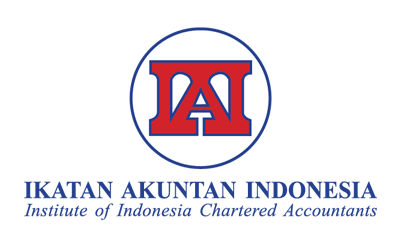TELAAH KONSEPTUAL TRANSFER PENGETAHUAN MELALUI KOLABORASI UNIVERSITAS DAN INDUSTRI
Abstract
Full Text:
PDFReferences
Agrawal, A., 2001. University to industry knowledge transfer: literature review and unansweresd question. International Journal of Management Reviews, 3(4), 285- 302
Anatan, L., 2011. Transfer pengetahuan dalam jejaring strategik: studi empiris pada aliansi universitas dan industri di Indonesia. Laporan Independent Study dan Research Project. Universitas Gadjah Mada Yogyakarta.
Barney, Jay B. 1991. Firm Resources and Sustained Competitive Advantage. Journal of Management. 17 (1): 99-120.
Chen, C., and Sewell, G., 1996. Strategies for Technological Development in South Korea and Taiwan: The Case Of Semiconductor, Research Policy. Vol. 25, pp. 759- 783.
Cohen, W. M., & Levintahal, D. (1990). Absorptive capacity: A new perspective on learning and innovation. Administrative Science Quarterly. 35, 128–152.
Dhanaraj, C., Lyles, M. A., Steensma, H. K. and Tihanyi, L., 2004. Managing tacit and explicitknowledge transfer in IJVs: the role of relational embeddedness and the impact on performance’. Journal of International Business Studies, 35, 428–42.
Dyer, J.H., Hatch, NW, Relation-specific capabilities and barriers to knowledge transfers: creating advantage through network relationships. Strategic Management Journal, 27: 701–719
Goerzen, A., 2005. Managing alliance networks: Emerging practices of multinational corporations, The Academy of Management Executive, Vol. 19, No. 2, pp 94-107.
Goerzen, A., 2007. Alliance Networks and Firm Performance: The Impact of Repeated Partnerships. Strategic Management Journal, 28, 487-509.
Hansen, M.T., 2002. Knowledge Networks: Explaining Effective Knowledge Sharing in Multiunit Companies. Organization Science, 13 (3), 232-248
Heide, Jan B. and George, J., 1992. Do Norms Matter in Marketing Relationships. Journal of Marketing. 56 (April): 32-44.
http://id.wikipedia.org/wiki/Korea_Selatan
Kale, D. ; Singh, H. and Perlmutter, H. 2000. Learning and Protection of Proprietary Assets in Strategic Alliances: Building Relational Capital. Strategic Management Journal. 21: 217-227.
Khamzeh, M., Jolly, D., 2008. Knowledge Transfer in Alliances: Determinant. Factorsâ€, The Journal of Knowledge Management, Journal of Knowledge Management, 12 (1), 37-50
Kim, L. and Dahlman, C.J., 1992. Technology Policy for Industrialization: An Integrative Framework and Korea Experience. Research Policy, Vol 21. pp.437-452.
Laursen, K. and Salter, A., 2006. ‘Open for innovation: the role of openness in explaining innovation performance among UK manufacturing firms’. Strategic Management Journal, 27, 131–50.
Lyles, M. A. and Salk, J. E. 1996. Knowledge Acquisition Form Foreign Parents in International Joint Ventures: An Empirical Examination in the Hungarian Context. Journal of International Business Studies. 27: 877-903.
Madique, M. and Patch, P. 1988. Corporate strategy and technology policy, in Thusman and W. Moore Eds. Reading in Management of Innovation (2nd ed.).
Manbieva et al., 2003. MNC knowledge transfer, subsidiary absorptive capacity, and HRM. Journal of International Business Studies, 34, 586-599.
mti.ugm.ac.id/~lukito/.../Kebijakan_Industri_TIK_di_Korea_Selatan
Nielson, B. B. 2005. An Empirical Investigation of the Drivers of International Strategic Alliance Formation. European Management Journal. 21(3): 301-322.
Phene, A., Madhok, A., Liu, K., 2005. Knowledge Transfer within Multinationa, firms:What drives the speed of transfer?Management International Review, 45 (2), 53-74.
Sherwood, A. L. and Covin, J. G. 2008. Knowledge Acquisition in University- Industry Alliances: An Empirical Investigation from a Learning Theory Perspective. Journal of Product Innovation Management. 25: 162-179.
Singley, M. K., & Anderson, J. R., 1989. The transfer of cognitive skill. Cambridge, MA: Harvard Univ. Press.
Smith, K.G., Collins, C.J., Clark, K.D., 2005. Existing knowledge, knowledge creation capability, and the rate of new product Introduction in high-technology firms. Academy of Management Journal, 48 (2), 346–357.
Syed Ikhsan, S.O.S. and Rowland, F., 2004. Benchmarking knowledge management in a public organisation in Malaysia, Benchmarking: An International Journal, 11, 3, 238-266, ISSN 1463-5771.
Yli-Renko, H., Autio, E. and Sapienza, H. J., 2001. ‘Social capital, knowledge acquisition, and knowledge exploitation in young technology-based firms’. Strategic Management Journal, 22, 587–613.
Zack, M., 1999. Developing a knowledge strategy. California Management Review, 41(3), 125-145.
DOI: https://doi.org/10.35591/wahana.v14i2.50
Wahana: Jurnal Ekonomi, Manajemen dan Akuntansi
ISSN : 2685-1415 (Online) | 1410-8224 (Print)
Published by Pusat Penelitian dan Pengabdian Masyarakat Politeknik YKPN Yogyakarta.
Jl. Gagak Rimang No. 2-4 Balapan, Yogyakarta 55222
Phone (0274) 560159, 562317, 513413, 563516 Fax. (0274) 561591
 This work is licensed under a Creative Commons Attribution-ShareAlike 4.0 International License.
This work is licensed under a Creative Commons Attribution-ShareAlike 4.0 International License.













